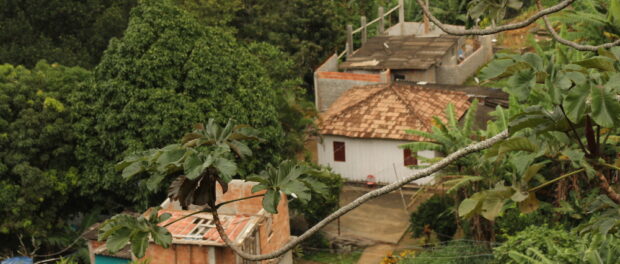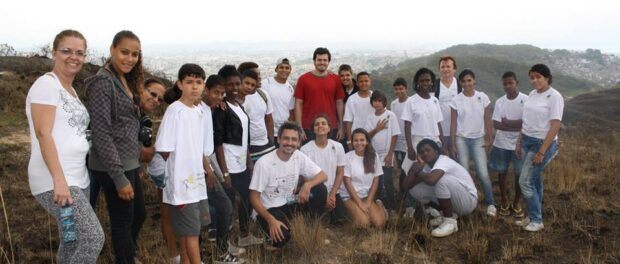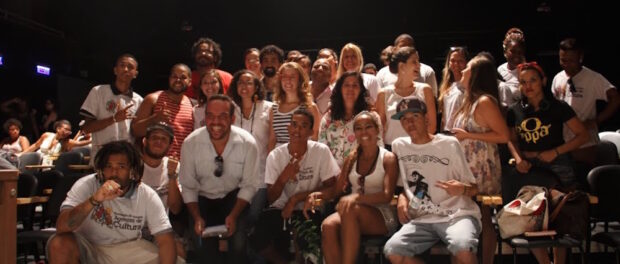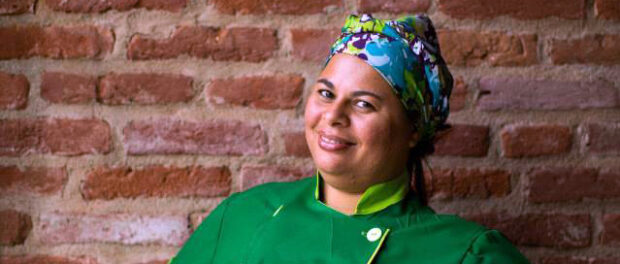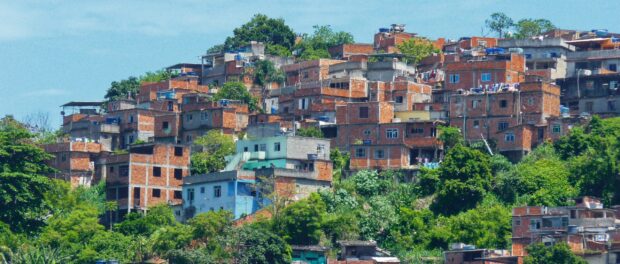
Favelas are natural incubators for new ideas, sustainability initiatives and community-led projects. They are increasingly being recognized as models of sustainability worldwide.
World Environment Day is organized annually by the United Nations to bring awareness to environmental issues around the world. In honor of this year’s World Environment Day theme “Seven Billion Dreams. One Planet. Consume with Care,” RioOnWatch has compiled a list of five favela initiatives that aim to make communities greener and more sustainable.
1. Vale Encantado
Vale Encantado is a community in Alto da Boa Vista, hidden within the Tjuca rainforest. Its name is Portuguese for “Enchanted Valley”. With no public investment, residents have developed local talent and sought and secured help from collaborators, local and international, to plan a sewerage system, implement solar panel, biodigester, community gardens and generate economic opportunities linked to eco-tourism.
In a recent piece for RioOnWatch, Asha Nimodulu wrote about the history of Vale Encantado and how it became a model for sustainability:
“In constant search for a solution [for the community’s stalled economy], Otávio Barros, a 5th generation resident elected president of the Vale Encantado Residents’ Association in 2005, got his answer upon being introduced to the French friend of a neighbor from the nearby condo. Upon meeting Otávio and discovering the sustainability gem that is Vale Encantado, Jerome Auriac encouraged Otávio to look into eco-tourism and established the French NGO ABAQUAR Paris to help. They began working together to build the potential of Vale Encantado for environmental tourism, Otávio becoming formally trained as a guide and establishing the Vale Encantado Cooperative in 2007, to provide employment to community families while supporting the environment.”
In 2014, the community was used as a case study to demonstrate favelas’ potential as models of sustainable development during the international sustainable building conference GreenBuilding Brasil, held in São Paulo in August. Vale Encantado is also one of eight communities featured in Catalytic Communities’ film, “Favelas as a Sustainable Model,” released in the Rio+20’s People’s Summit in June 2012. The community has recently been featured as an example on the Inter-American Development Bank’s blog.
2. Complexo do Alemão’s Verdejar
Portuguese for “Becoming Green,” Verdejar is an NGO located in the North Zone of Rio, in the community of Complexo do Alemão. Founded in 1997 by late poet Luiz Poeta, Verdejar’s activities include reforestation, serving as a lab for green sanitation experiments, community gardening and environmental education. The NGO successfully obtained protection of the North Zone‘s last remaining piece of Atlantic Forest, the Serra da Misericórdia, a 17 square-mile piece of land in Alemão.
In 2013, Verdejar’s efforts were recognized after being awarded the status of Culture Point by the federal government. The recognition resulted in a documentary produced by young residents of the community to bring awareness to the destruction of Serra da Misericórdia, which has suffered with granite mining and other sources of pollution from the electric utility, Light. The company was also responsible for the removal of the NGO from its previous headquarters in 2012.
Verdejar’s late founder Luiz Poeta spoke to RioOnWatch in 2011 before passing away with Cancer. He said: “Agroecology is a movement that intends to transform the society it encounters. Love is practiced; people hug one another, live together, and value agriculture, womens’ rights and gifts, and quilombos (settlements where descendants of slaves still live today). It is a movement for transformation.”
For more information and to stay up-to-date with Verdejar activities, follow them on Facebook.
3. Rocinha’s Movimento Preserva Vila Laboriaux
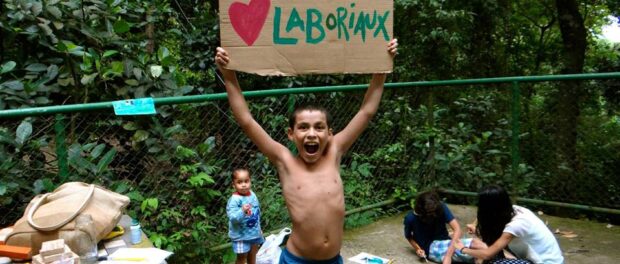
With a long history of government neglect and threats of eviction, Vila Laboriaux‘s journey is an example of resistance. Much of it is thanks to the community group Movimento Preserva Laboriaux that was finally recognized for its resilience and hard work this year after being named one of 85 winners of the City of Rio’s Local Actions Prize, part of Rio’s 450th anniversary celebrations. The group promotes the sustainable development of Vila Laboriaux in Rocinha, where 600 families live. In a recent piece for RioOnWatch, Sarah Jacobs listed the activities offered by the group:
“From its first event–a group clean-up of 1.5 tons of garbage that had been left to pile up in the community–to today, it has worked in a participatory way, consulting and implementing resident priorities. Other activities organized by the group include urban art, community gardening, cultural activities and environmental education and preservation.”
For more information and to stay up-to-date with Movimento Preserva Laboriaux activities, follow them on Facebook.
4. “Planting Ideas” in Manguinhos
A joint initiative between Teto Verde Favela (Green Roof Favela) and Favela Criativa (Creative Favela), the project Plantando Ideias (Planting Ideas) was launched in March 2015 to raise environmental awareness within the community of Manguinhos, in Rio’s North Zone. The project was created by 20-year-old community resident Eduardo Costa, who says the objective is simple: to make favelas greener. He explains that “by involving the community members in ecological projects and building an environmental discourse, residents can improve their own attitudes toward the environment.”
The launch event was a simple but fun one. Throughout the afternoon of March 4, residents of Manguinhos put on a series of events, from gardening to graffiti to a rap concert, all aimed at raising environmental awareness within the community. A documentary about Teto Verde Favela was screened and residents planted cacti around the community sports center. Brooke Parkin reported for RioOnWatch at the time:
The screening of the documentary Teto Verde Favela explained the ambitions of the organization: to encourage community residents to have more plants, and in particular, plants on rooftops. Antônio Soares, a biologist who works closely with Teto Verde Favela, explained that they are “implementing the idea of sustainability in communities through the green roof, with a green covering not only to ease the temperature in the houses but also to make it more beautiful, to give a natural beauty to the area.”
Click for more information and to stay up-to-date with Teto Verde Favela or Favela Criativa.
5. Babilônia’s Favela Orgânica
When it comes to diminishing waste, Favela Orgânica is a champion. Founded by Regina Tchelly using minimal resources, Favela Orgânica has become globally recognized as part of the Slow Food Movement. Regins develops creative and exquisite culinary treats from food that is normally wasted in Morro da Babilônia: orange peel, watercress stems and pumpkin skin are common ingredients.
“The idea is that people with low incomes and high incomes alike learn how to use all the food they bring to their homes and produce delicious meals like we’re serving today,” Tchelly said in a RioOnWatch profile of Favela Orgânica. “It’s low cost, healthier and more economical for the home.”
For more information on Favela Orgânica and details of future events visit favelaorganica.blogspot.com or fan the Favela Orgânica Facebook page.

